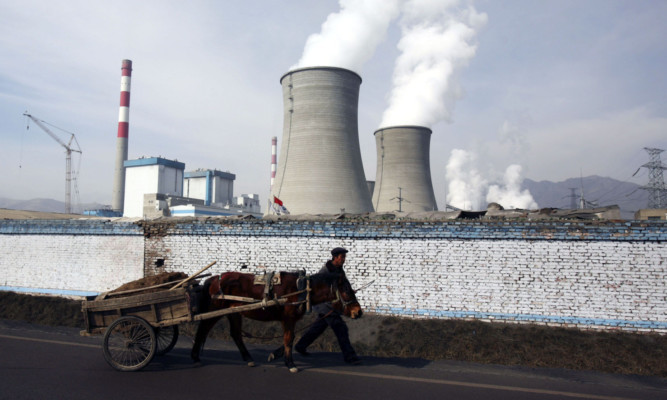A total of £100,000 of taxpayers’ cash is being ploughed into China’s emerging carbon capture and storage sector in a bid to leverage opportunities for Scottish oil and gas companies.
The Scottish Government and national economic agency Scottish Enterprise have each contributed £50,000 in support of the UK-China (Guangdong) CCUS Centre which is helping to establish a carbon capture test facility at the Haifang coal-fuelled power plant.
The centre is also involved in a pre-front- end engineering study to design and build a CO2 capture plant at a new-build coal-fired power station in Guangdong.
It is hoped the cash will help Scottish research institutions and businesses to engage in a significant manner in the development of CCS technologies across China.
“China is one of the world’s largest energy producing and consuming countries,” the Business, Energy and Tourism Minister Fergus Ewing said.
“As a proportion of the world’s atmospheric emissions, it releases over a quarter of the total emissions of carbon dioxide and this trend is rising. As a result, China is facing increased pressure to reduce its CO2 emissions.
“Scotland’s energy industry is a recognised leader and is proven to work in partnerships around the world. Forty years of oil and gas production has created a strong supply chain, a skilled workforce, a renowned academic sector and well-developed energy infrastructure. These skills can be readily transferred to the CCS industry.
“Scotland is at the forefront of CCS and CO2 enhanced oil recovery research, and we are looking to strengthen Scotland’s cooperation with China.”
Shell and Perth-based SSE are progressing a major CCS demonstration project at Peterhead power station.
The plan is to retrofit CCS technology to the station and pump CO2 gases back through existing pipelines for storage under the seabed within Shell’s depleted Goldeneye field.
A final investment decision has yet to be made on the project, and other Scottish CCS schemes remain in their infancy.
However, David Rennie, SE’s international sector head for oil and gas, said there was a significant opportunity in the Far East for Scottish firms.
“Providing early support to China on its CCS journey will help put Scotland firmly in the limelight for future opportunities.
“It will provide us with new connections in the Chinese energy industry, enabling us to demonstrate our world-renowned industry and academic expertise in the oil and gas sector.”
A steering group of the project backers and academics from the Scottish Centre for Carbon Capture and Storage (SCCS) has been set up to ensure the £100,000 is spent in areas which will highlight the Scottish supply chain’s expertise.
SCCS team leader Philippa Parmiter said: “Our link with Guangdong enables us to build relationships and jointly develop CCS opportunities in a region with many similarities to Scotland.”
The move comes after a delegation of Scottish firms including Aggreko and Wood group participated in the China (Beijing) International Offshore Oil and Gas Technology Conference.
While the focus of recent days has been on increasing business opportunities in the Far East, China has become a significant player in Scotland’s energy sector in recent years with CNOOC’s acquisition of Nexen, Sinopec taking a 49% stake in Talisman Energy (UK)’s North Sea business and PetroChina owning 50% of the Grangemouth oil refinery.
